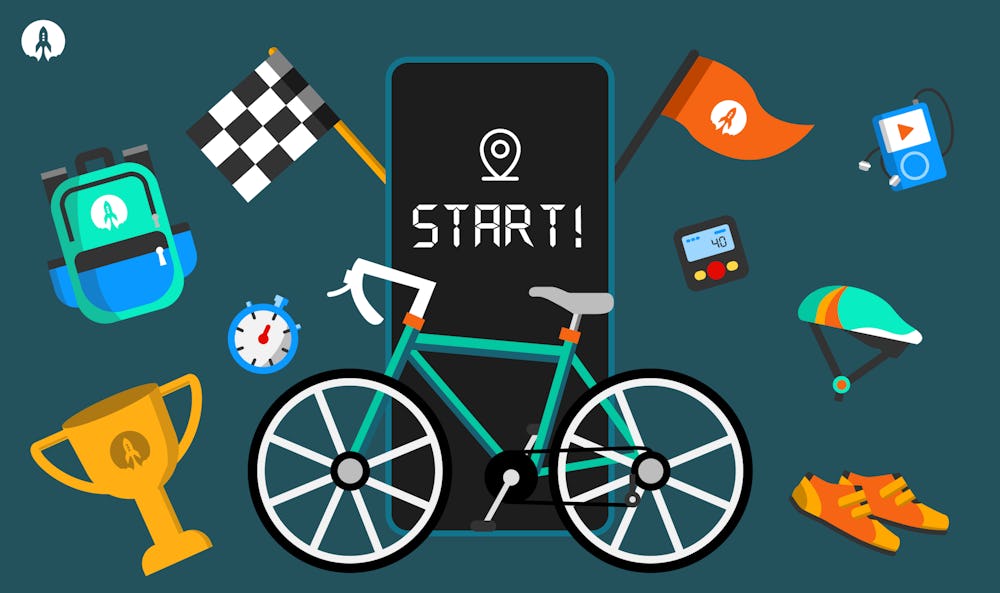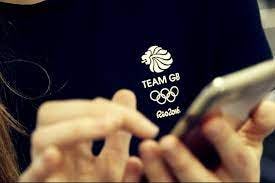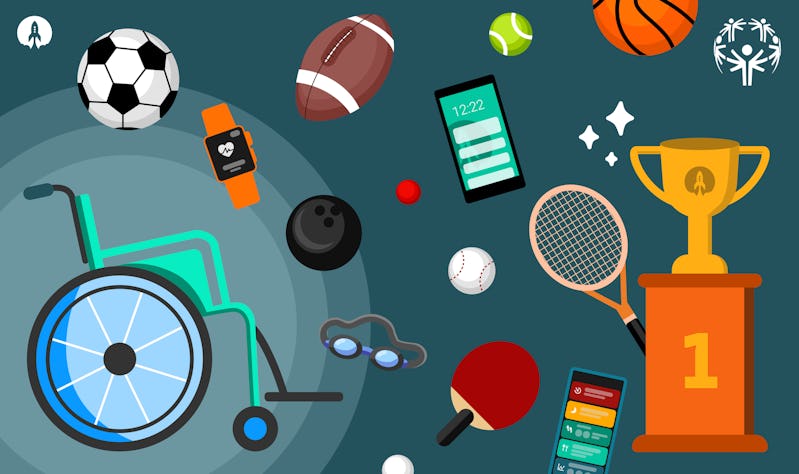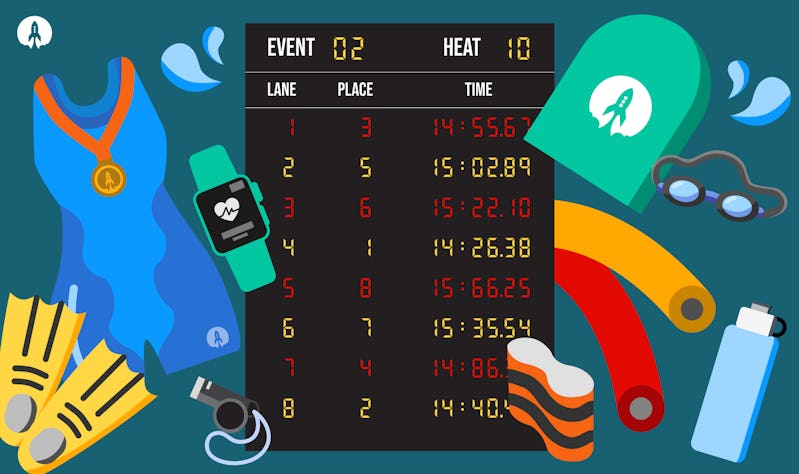
The Future of Play: Exploring Cutting-Edge Sports Technology
In an era where technology intersects with every aspect of life, the realm of sports is no different.
Sports technology is a rapidly growing sector that redefines athletic performance, enhances fan engagement, and offers unprecedented insights into sports through analytics.
From wearables that monitor every heartbeat to immersive fan experiences powered by VR, this industry is not just supporting athletes and teams—it's revolutionising how we experience sports.
Join us as we delve into the world of sports technology by looking at its many benefits and the new industries that are driving this change into 2024 and beyond.
What Is Sport Technology?
Sports technology refers to the use of advanced tools, devices, software, and systems designed to improve performance, safety, and the overall experience in sports.
This includes a wide range of applications, such as wearable devices for monitoring athlete health and performance, video analysis tools for strategy and technique improvement, smart equipment, VR and AR technologies, data analytics for strategising and understanding fan behaviour, and innovations in stadium technology to enhance the fan experience.
The Benefits of Sports Technology
Sports technology is more than a business venture; it's a way to make a real difference in sports. Here’s how it helps:
✅Boosting athletic performance: Sports tech aims to improve how athletes perform. It gives coaches and players valuable information, which leads to better, personalised training.
✅Injury prevention and recovery: Technology can help predict potential injuries and it offers support during recovery with data-driven rehab programs.
✅Data analytics for better decisions: There's a growing need for data in making sports decisions. Tech solutions provide insights to improve performance, avoid injuries, and manage teams.
✅Getting a competitive edge: Athletes and teams use sports tech to gain an advantage. It offers new training methods and deeper insights into their performance.
✅Accessibility in sports: Tech makes sports more accessible, especially for those with disabilities or limited access to sports facilities. It brings sports closer to a wider audience through apps and devices.
✅Advancing sports science: Developing sports tech products contributes to understanding human performance and provides new insights in areas like sports psychology and biomechanics.
✅Engaging sports fans: For passionate fans, sport is an experience. Technology can enhance how they watch and interact with their favourite sports on platforms that make viewing more immersive.
✅Promoting health and fitness: With a focus on health, sports tech can play a big role. Products that encourage fitness and wellness are becoming increasingly popular by tapping into this health-conscious trend.
Emerging Sports Tech Industries
The sports technology sector is growing. The industry was valued at $17.9 billion in 2021 and is projected to hit $40.2 billion by 2026.
This industry is not just changing the game; it's redefining the entire sports experience. Below, we'll explore the most significant trends for 2024 and showcase how these technologies continue to shape the future of sports.
Technology Platforms
The sector now boasts numerous technology platforms that integrate artificial intelligence (AI), biometric data, GPS tracking, and other sophisticated tools.
These platforms offer a holistic approach to monitoring and enhancing athletic performance. When developing training regimens, teams can collect various sets of biometric data, including exertion levels, recovery metrics, etc.
Platforms can also use biometric data to identify athletes at higher risk of injury, which allows preventative measures to be taken before injuries occur.

🚀Case Study: Building the Performance Data Management System for the English Institute of Sport
As leaders in sports tech, we're proud to have developed the English Institute of Sport's (EIS) Performance Data Management System (PDMS).
The Challenge
EIS's previous medical record system was both costly and challenging to use, and it failed to capture all the necessary data. This prevented them from making well-informed decisions and managing athletes effectively.
Our Solution
To address these challenges., we created PDMS, a comprehensive, secure, and user-friendly platform tailored for elite athlete management. The system was designed to gather both objective and subjective data to provide a complete narrative of an athlete's journey.
This included direct input from athletes using the intuitive PDMS Athlete smartphone app, which simplified data entry while capturing crucial information about training, recovery, and personal well-being.
The Impact
PDMS rapidly became a key part of Britain's elite sports system. It was adopted by various national sports organisations, greatly aiding in athlete management and training. By the 2016 Rio Olympics, PDMS supported over 20 national sports bodies.
❤️Interested in exploring more of our work? Click here to discover our other successful projects.

Wearable Technology
Wearable technology in sports has seen significant advancements, offering various applications that enhance athlete’s performance, safety, and health monitoring. Here are some notable examples:
🔸Fitness trackers: Devices like Fitbit, Garmin, and Apple Watch track daily activity levels, monitor heart rate, count steps, and analyse sleep patterns. They are widely used by both professional athletes and fitness enthusiasts.
🔸Smart clothing: Clothing embedded with sensors, such as Under Armour's Athlete Recovery Sleepwear, which tracks sleep quality and muscle recovery, or smart shirts that monitor heart rate, breathing patterns, and body temperature during exercise.
🔸GPS tracking devices: Used in team sports like soccer and rugby, these devices (like Catapult Sports and STATSports) track player movements, distance covered, and speed, and provide valuable data for optimising training and game strategies.
🔸Heart rate monitors Chest straps or wrist-based monitors (like Polar and Wahoo) that provide accurate real-time heart rate data, which helps athletes train at the right intensity for optimal performance.
🔸Biometric sensors: These are devices that measure specific physiological data. An example is the Zephyr BioHarness, which measures heart rate, breathing rate, and skin temperature, and provides insights into the athlete's stress levels and overall physical condition during training.
Video Technology
This advanced software is used for motion analysis, play strategies, and performance assessment. These tools help coaches and athletes track performance and develop strategies based on data-driven insights.
Video Analysis
Video analysis tools in sports technology have become essential for coaches, athletes, and teams to analyse performances, refine techniques, and strategise game plans. Here are some prominent examples:
Hudl
A popular video analysis platform used in various sports, Hudl allows teams to upload game footage, break it down into individual plays, and annotate videos for detailed analysis. It's widely used for player development and scouting in sports like football and basketball.
Dartfish
Known for its advanced video analysis capabilities, Dartfish is used in many Olympic sports. It offers tools for detailed motion analysis and performance tracking, and provides a platform for sharing feedback with athletes.
Video Replay Systems
Video replay systems and goal line technology are vital for sports officials, as they allow them to review important plays and make more accurate decisions.
Widely used in various sports, these systems include the VAR (Video Assistant Referee) in football, which assists referees with crucial calls on goals and penalties.
Similarly, a Television Match Official (TMO) utilises video replay in rugby and the premier league to ensure correct rulings. In basketball, instant replay plays a key role in verifying scoring and foul calls.
By enhancing the accuracy of decisions, this technology makes games fairer, reduces errors, and helps fans better understand key game moments.
Smart Equipment
Smart equipment in sports technology integrates advanced sensors and connectivity to enhance training, performance, and safety. Here are a few examples of innovations in this space:
🔸Smart balls: Balls embedded with sensors that provide data on speed, spin, flight path, and impact force. In soccer, for instance, the Adidas miCoach Smart Ball gives feedback on the strike point and ball trajectory.
🔸Intelligent wearables: Wearable devices like the WHOOP Strap that monitor physiological data including heart rate, sleep quality, and recovery, which helps athletes optimise their training and performance.
🔸Smart shoes: Footwear with embedded sensors that provide data on step count, speed, and gait analysis of a player's foot. Nike's Adapt BB is such an example; it also features self-lacing technology for a perfect fit.
🔸Head impact monitors: Devices like the Reebok Checklight or the LINX IAS, worn on the head, measure the force and frequency of blows to the head in contact sports, thereby aiding in the detection and management of concussions.
🔸Smart fitness equipment: Equipment like Peloton bikes and smart treadmills that offer interactive training sessions, performance tracking, and connectivity with training apps.

Virtual and Augmented Reality
Virtual reality and augmented reality technologies are used for immersive training experiences, enabling athletes to simulate real-world scenarios and environments for practice without facing physical risk.
🔸VR training simulators: Tools like STRIVR are used in sports training and they offer athletes a virtual environment to practice their skills. For example, quarterbacks in American football can use VR to simulate game situations and improve decision-making.
🔸AR mobile apps for fan engagement: Apps like NBA AR allow fans to play virtual basketball on their smartphones by overlaying a virtual hoop over the real world.
🔸VR training for race car drivers: High-fidelity simulators like those used in Formula 1 provide a virtual environment for drivers to practice circuits and race car handling without the risks that a real track poses.
🔸VR fitness and sports games: Games like Beat Saber and VR Sports Challenge offer a fun and interactive way to exercise by combining physical activity with virtual gaming experiences.
🔸Immersive fan experiences: VR experiences that bring fans closer to their favourite teams, like virtual tours of stadiums, or those that allow them to meet virtual avatars of players or experience historic games in VR.
Injury Prevention and Rehabilitation Technologies
These involve technologies like biomechanical analysis systems and smart fabrics that monitor muscle activity and body posture to help prevent injuries and aid in rehabilitation.
🔸Smart recovery devices: Products like Theragun or Hyperice, which use percussion therapy to enhance muscle recovery, improve circulation, and reduce the risk of muscle injuries.
🔸Gait analysis technology: Advanced treadmills and software systems that analyse an athlete's walking or running pattern, which helps them identify imbalances or unusual movements that could lead to injuries.
🔸Compression wearables: Smart compression garments, such as those from NormaTec, use dynamic compression to enhance recovery, reduce muscle soreness, and improve circulation.
🔸Real-time feedback devices for rehabilitation: Devices like the Neofect Smart Glove provide interactive exercises and real-time feedback for patients recovering from hand or wrist injuries.
Data Analytics
Big data analytics is a major tool in sports and significantly impacts areas like player recruitment, game strategy, and performance enhancement.
It involves the analysis of large volumes of data to make well-informed decisions, which helps teams and athletes improve their game based on reliable insights. This approach is key to making more intelligent, data-driven choices in the competitive world of sports.
Here are some examples of how data analytics is applied in the sports industry:
🔸Player performance analysis: Tools like Prozone and STATS Sports, which collect and analyse data on player performance, including distance covered, speed, and effectiveness in specific roles, help coaches make informed decisions on tactics and player selection.
🔸Wearable analytics: Devices like WHOOP and Catapult Sports collect physiological and biomechanical data from athletes, which is then analysed to optimise training loads, recovery periods, and prevent injuries.
🔸Match analysis software: Systems like Hawk-Eye, widely known for its use in tennis and cricket, analyse the ball's trajectory to make precise line calls. In team sports, similar systems provide tactical and performance analysis.
🔸Fan engagement and marketing analytics: Platforms like SAP Sports One collect data from various sources, including ticket sales, merchandise purchases, social media interactions, and website traffic, which allows sports organisations to tailor their marketing strategies, improve fan engagement, and enhance the overall fan experience.
🔸Scouting: Advanced scouting software, like Wyscout or Scout7, is used by football clubs to identify potential recruits by evaluating players based on detailed statistical data.
🔸Health and nutrition analytics: Tools that analyse athletes' health and nutrition data to customise diet plans and monitor health indicators, which enhances their overall well-being and performance.
🔸Game strategy and analysis: Software such as Second Spectrum that helps teams analyse their own and opponents' game strategies, which provides in-depth tactical analysis in basketball and soccer.
🔸Financial performance analytics: Analysis of sports teams’ financial data to optimise spending on player salaries, transfer fees, and other operational costs, which ensures financial stability and compliance with regulations like UEFA’s Financial Fair Play.
🔸Social media analytics: Tools that analyse social media data to gauge fan sentiment, track the popularity of players or teams, and inform marketing and communication strategies.
Digital Fan Engagement and Sports Event Technology
Technological advances in sport are about more than just helping athletes. It's changing how we experience and manage sports events. This technology connects fans and sports teams, and makes fans feel as if they're part of the action.
Stadium and fan technologies play a big role in this change. They help fans enjoy sports in new ways, both at the stadium and from home.
Apps and platforms make joining loyalty programs, getting team news, and buying team gear and tickets easy. In short, these new technologies make being a sports fan today more fun and interactive.
Here are some examples:
Fan Engagement Platforms
These are online platforms and social media initiatives that engage fans through fantasy leagues, polls, quizzes, interactive content, and access to high-tech rewards. For instance, ESPN Fantasy Sports allows fans to create and manage their own fantasy sports teams, which offer them an engaging mix of real-world statistics and interactive competition.
Interactive Mobile Apps
Apps like MLB Ballpark enhance the game-day experience with real-time stats, player info, and the in-seat ordering of food and merchandise. They also offer features like mobile ticketing and interactive stadium maps, which make the overall experience more convenient and enjoyable.
Mobile Ticketing
Apps like Ticketmaster simplify the stadium entry experience by letting fans handle tickets digitally. This includes buying, selling, and transferring tickets through the app and a mobile check-in option. It eliminates the need for physical tickets and makes entry into sporting events smoother and more efficient.
Cashless Payments and Digital Wallets
Stadiums like Atlanta's Mercedes-Benz Stadium have embraced cashless payments, which allows fans to use digital wallets or cards for quick purchases. This setup speeds up buying food and merchandise, cutting down on long lines and wait times.

💡Expert insight: NFTs may not be dead after all!
NFTs (Non-Fungible Tokens) are being used to revolutionise ticketing by offering more secure and transparent transactions.
This digital approach helps curb fraud and illegal ticket scalping. Also, it enables the original ticket issuers to earn royalties from secondary market sales, which brings a new level of control and profitability to event ticketing.
Activity Monitoring
Activity tracking is a burgeoning industry within sports technology, not just for elite athletes, but also for the general public. It focuses on health and fitness enhancement through a variety of digital tools:
🔸Activity trackers: Devices like smartwatches and fitness bands that track physical activity and other health metrics.
🔸Workout guides: Software applications that provide detailed workout routines and instructional content.
🔸Calorie counters: Apps focused on diet that track calories burned and help with weight management.
🔸Meal planners: Digital tools that assist in creating diet plans, suggesting recipes, and managing nutritional goals.
🔸Sleep tracking: This software is used to monitor and improve sleep quality for better performance and recovery.
These products are designed to monitor and guide users’ physical activity and health, and they embody the core functions of activity monitoring in sports technology.
As technology advances, we can expect even more innovative solutions to emerge in this field, further revolutionising how athletes train and perform.
Final Thoughts
To wrap up, technology has significantly reshaped the world of sports. It encompasses everything from advanced wearables that boost athletic performance to data analytics that guide team strategies.
Sports tech is about more than just advanced gadgets. It's a pivotal element in modern sports that enhances how we play, watch, and interact with our favourite games.
The future of sports technology promises even more integration and innovation, continually evolving the sports and entertainment landscape.
👋 We’re Rocketmakers
Over our 16-year journey at Rocketmakers, we've collaborated with multiple sports technology innovators such as the English Institute of Sport, Bath Racing, and the Ineos Grenadiers to develop cutting-edge software solutions tailored to high-performance athletes.
🚀Your Vision, Our Expertise
Whether you're looking to revolutionise the sports industry or elevate athletic performance, Rocketmakers is your teammate in this journey.
Whether starting from scratch or seeking to elevate an existing sports tech project, our team is ready to make your vision a reality. Are You Ready to Innovate? Let's build the future of sports together.
Get in touch to see how we could help your sports tech company skyrocket!
